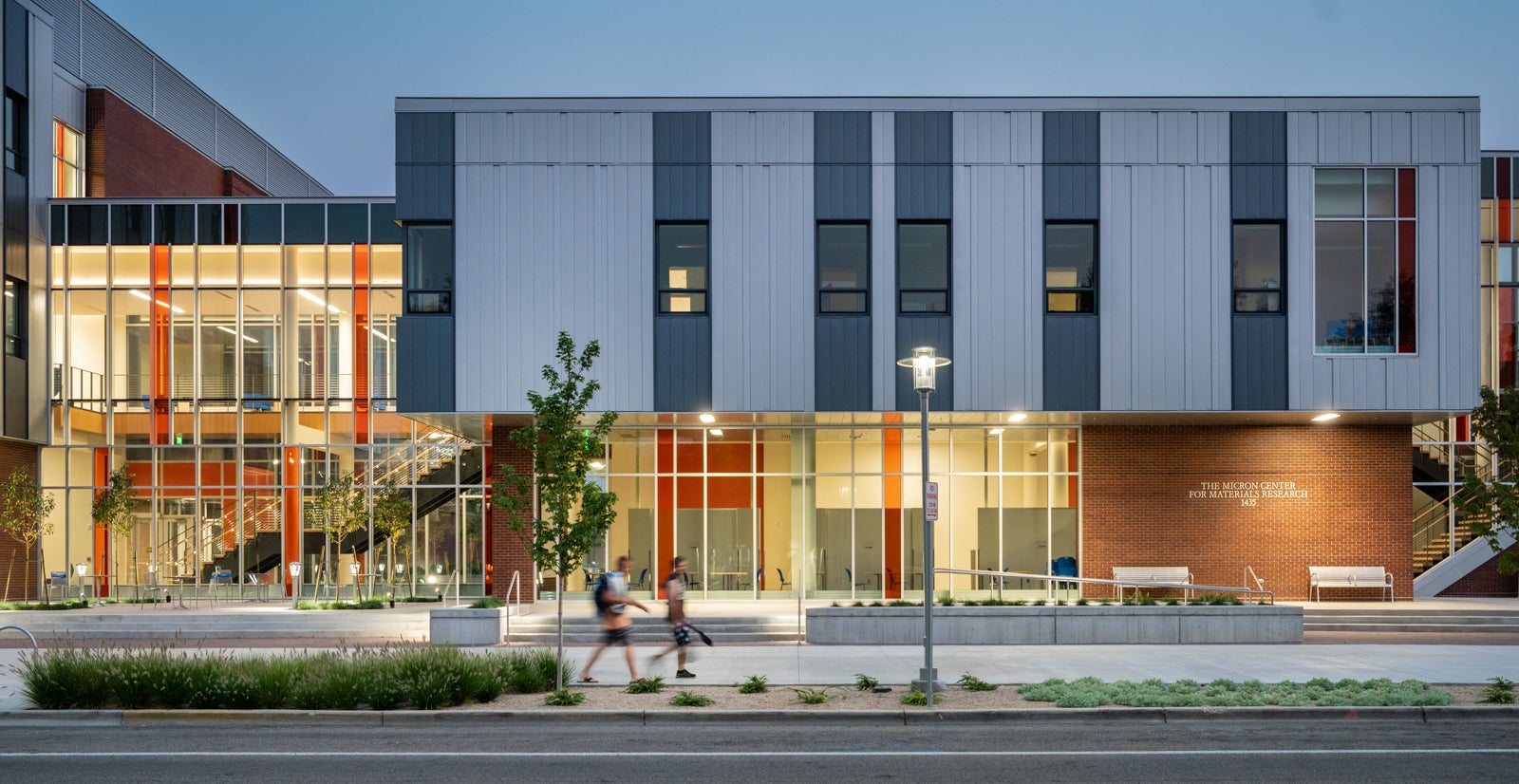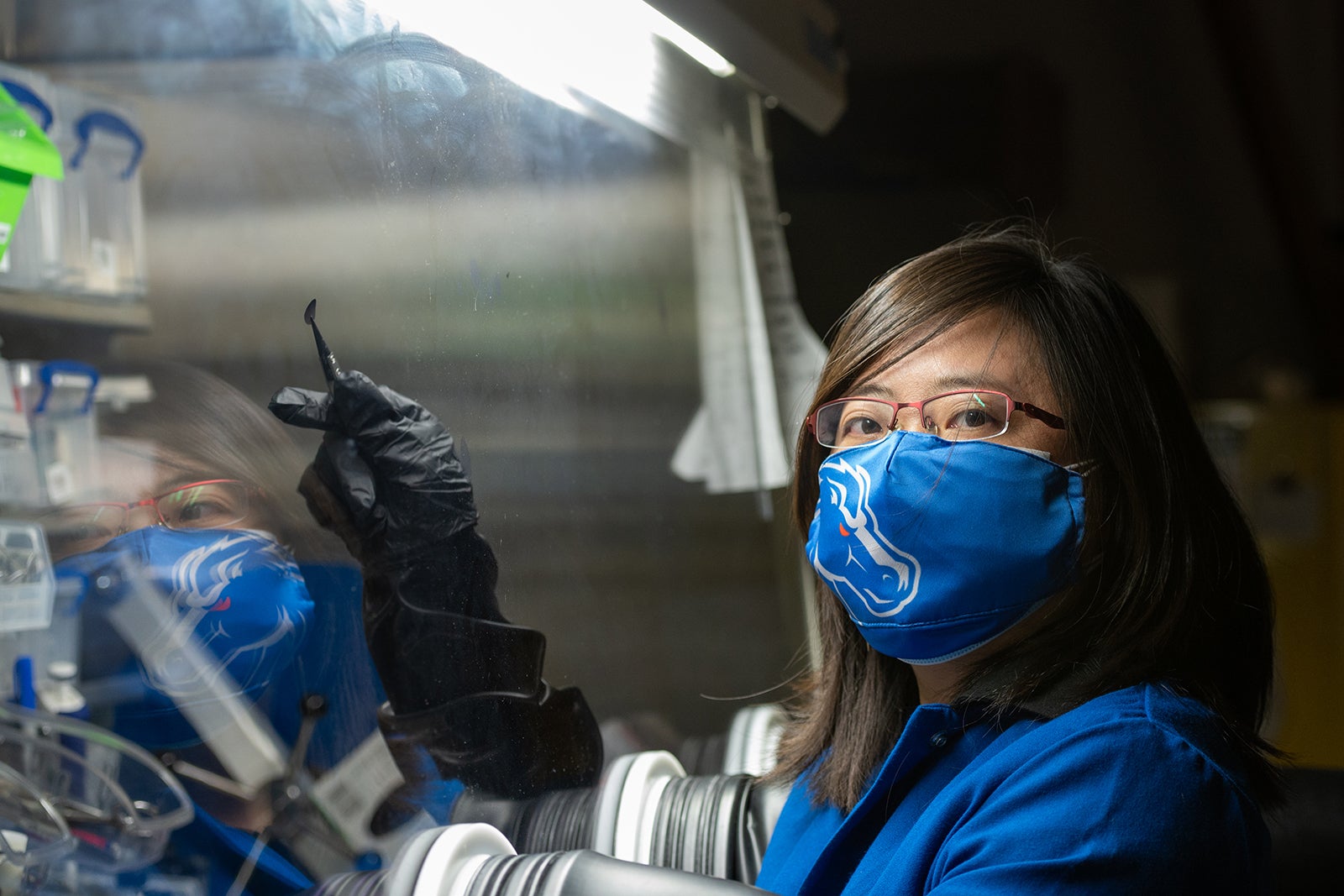
Materials shape our lives. The aluminum can of soda sweating in its cupholder, the composite wood flooring beneath our feet, the tablets we watch our favorite movies on. Everything we interact with is a material, whether we stop to think about it or not. At Boise State, innovation drives the research, development and implementation of new materials every day.
Boise State has a history of diving into the extraordinary world of materials. Since the founding of the university’s materials science program in 2003, there have been remarkable changes — growing from a small interdisciplinary minor to the largest STEM-based PhD program in Idaho, achieving a 331% increase in research in the last five years, and reaching 41% female representation in the undergraduate program, which positions Boise State among the nation’s best for female enrollment.
Most recently, the university celebrated the opening of the new $50 million Micron Center for Materials Research, named for the Boise-based international computer storage and memory technology company. The center is a campus and community innovation hub for materials research and serves as the home of the recently named Micron School of Materials Science and Engineering. This state-of-the-art building was made possible through the support of multiple generous donors.
“We are grateful for the contributions of Micron to materials research on our campus,” said College of Engineering Dean JoAnn Slama Lighty, also noting Micron’s investment in the Ph.D. program in Electrical and Computer Engineering, the establishment of the Micron School of Materials Science and Engineering, and the Ph.D. program in Materials Science and Engineering.

The 97,000-square-foot building provides research laboratories and spaces, state-of-the-art learning environments, a 250-seat lecture hall, two large classrooms, offices and work spaces for faculty members, staff and graduate students advancing materials education and research at Boise State.
“We are the only school, that I know of, in the U.S. named after a global semiconductor company,” said Will Hughes, a professor in the Micron School of Materials Science and Engineering. “We carry this banner with great pride as we strive to make materials that matter. We do this by embracing inclusive practices, supporting campus and community collaborations, and maintaining an unshakable focus on student learning.”
“Micron and its foundation are proud to support Boise State and grow the Micron School of Materials Science and Engineering,” said Dee Mooney, executive director of corporate citizenship at Micron. “We believe the School and the building will provide resources to develop students into the visionaries and leaders needed to advance technology and change the world.”
The Micron Technology Foundation Inc. gave the lead gift of $25 million — the largest single gift in Boise State history — for construction of the Micron Center for Materials Research. Micron has been a partner with Boise State in shaping the future of Idaho since the company, and later the foundation, were formed. To date, its support of Boise State has exceeded $75 million.
A Glimpse Inside
Faculty within the Micron School of Materials Science and Engineering are nationally recognized for their work in the areas of smart, programmable, functional, energy and extreme environment materials, as well as biological sciences and nanotechnology. The program is also advancing nanomaterial research with a $320,400 investment by the M.J. Murdock Charitable Trust to purchase an Atomic Force Microscopy–Infrared Spectroscopy (AFM-IR) system.
Inclusivity and sustainability are core to the mission of materials science program at Boise State. Research teams collaboratively model, synthesize, and characterize nuclear enabling technologies, DNA for quantum computing and massive data-storage applications, high-performing batteries for the electric vehicle revolution, and plastics for a more sustainable future.
Student Experiences
Students earning a degree in materials science and engineering emerge as important contributors across many scientific and engineering disciplines, including advanced manufacturing, synthetic biology, energy studies, space and aeronautics, and the development of new sensors and microelectronic devices.
“We have so many instruments and tools at our disposal to conduct state-of-the-art research and experts in many areas of materials research that are approachable and eager to share their expertise. It’s exciting to think of all of the potential discoveries that can, and are, happening right here in our labs.”
ADDIE LUPERCIO
third year doctoral student and Nuclear Energy University Program Fellow
“Conducting materials research at Boise State provides a one-of-a-kind experience that enables you to develop the skills and knowledge to be competitive in the workforce within an academic environment that is caring and supportive of their students.”
KIYO FUJIMOTO
fifth-year materials science and engineering doctoral student
In 2020, Fujimoto received a national appointment within the Students, Post Doctoral and Early Career Professionals Subcommittee of the President’s Council of Advisors on Science and Technology.
“My alma mater was Purdue, which is twice the size of Boise State. That sounds great since you get the latest and greatest but there’s a huge downside – these places don’t always allow students to really get trained hands on for the instruments. Boise State on the other hand, gives grad students and undergraduate students alike, the opportunity to really get to know the technology they are working with.”
— SAMUEL PEDERSEN, fourth year doctoral student.
“Our program is driven to involve undergraduates in research early on in their college experience. I was no exception and was fortunate to be involved in nuclear fuel research as well as archaeological and art projects, all of which I’ve had the opportunity to publish on as a first and co-author as an undergraduate. I fully believe it was my research experience as an undergraduate which led to my fellowship awards and, ultimately, being able to complete my PhD research at the Idaho National Laboratory (INL).”
— JENNIFER WATKINS, fifth year PhD student and INL graduate fellow.